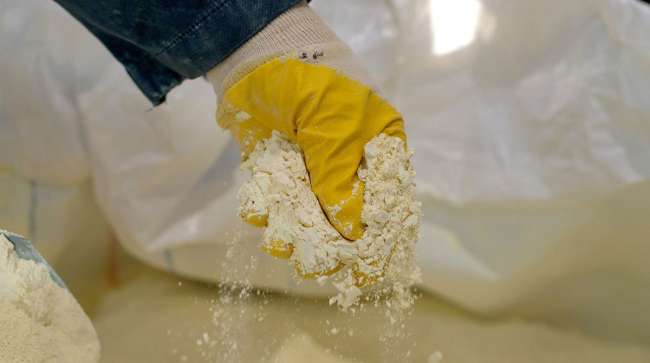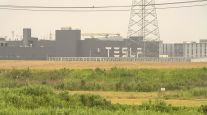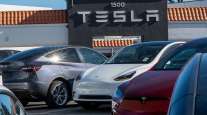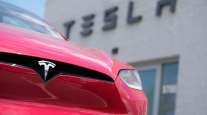Bloomberg News
Tesla’s Vision of EVs Could Spur Magnet Race

[Stay on top of transportation news: Get TTNews in your inbox.]
Tesla Inc.’s ambition to remove rare earths from future models has producers in the sector reeling, but it also should spur global efforts to deliver alternatives for electric car motors that currently rely on the materials.
Model 3 and Model Y powertrains have already reduced consumption of heavy rare earths by a quarter, and Tesla’s next drive unit includes a permanent magnet motor that doesn’t use any of the materials, Colin Campbell, vice president of powertrain engineering, said during the company’s investor day early in March.
The automaker is looking to keep driving down costs, avoid processes with environmental and health risks and reduce reliance on commodities that can be most susceptible to wild price swings.
Rare earths — which are used in magnets in everything from phones to wind turbines and fighter aircraft — have long been a pain point for automakers and the clean-energy sector, because of unpredictable prices and China’s tight grip on the supply chain. China accounts for around two-thirds of mining and 85% of refining of the materials.

Joel Morrow of Alpha Drivers Testing & Consulting traveled across America asking one simple question: What if a trucker designed a truck? Hear the program above and at RoadSigns.TTNews.com.
The risks of reliance on Beijing were highlighted in 2010, when prices spiked on China’s decision to slash exports, and in 2019 and 2020 amid speculation that shipments could be limited again amid trade tensions with the U.S.
Others carmakers including BMW AG, Toyota Motor Corp. and General Motors Co. also have sought to reduce reliance on rare earths.
Shares of producers including JL Mag Rare-Earth Co. and Jiangsu Huahong Technology Stock Co. immediately sold off after Campbell’s comments, while Lynas Rare Earths Ltd. — the biggest producer of the materials outside China — is down about a quarter this month.
The lack of diversity in rare earth permanent magnet supply chains is “a key concern for the industry within the geopolitics of critical materials,” said Nils Backeberg, founder at London-based consultancy Project Blue. “Use of cheaper — though less performance- and efficiency-focused — technologies is likely to become more widespread.”
One potential alternative could be ferrite magnets, made of iron and mixed with materials like barium and strontium, which are more widely available and cheaper, according to William Roberts, a senior research analyst at London-based consultancy Rho Motion.
GM has previously used these, and Japan-based Proterial Ltd. said in December it had developed motors using ferrite magnets that matched the performance of components using rare earths.
Want more news? Listen to today's daily briefing above or go here for more info
Minneapolis-based Niron Magnetics Inc., which has partnered with Volvo Car AB, last year won a $17.5 million U.S. Energy Department grant to help scale up work on rare earth-free magnets that use iron nitride-based technology.
A team from the University of Cambridge and colleagues from Austria announced a new method to make tetrataenite, a possible replacement for rare-earth magnets, in a research paper published last year.
Ferrite magnets are the most likely candidate for Tesla’s innovation, research firm Adamas Intelligence Inc. said in a note, though the technology faces a challenge as it has traditionally come with a “significant weight or efficiency penalty.”
Existing rare earth-based motor systems also have a track record of efficiency, and demand for the materials in electric vehicles and renewables energy is forecast to surge.
About $3.8 billion of magnet rare earth oxides were consumed in energy transition-related applications in 2022, and the figure will reach more than $36 billion in 2035, Adamas forecasts.




